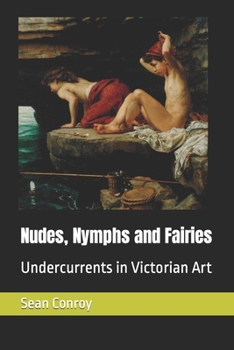Nudes, Nymphs and Fairies: Undercurrents in Victorian Art
We often think of the Victorians as repressed and easily offended by nudity. Sometimes, we consider them to be hypocritical, behaving badly but preaching the virtues of morality and family life. Like any culture in any period, Britain in the late nineteenth century was complex: surprising expressions of sexuality existed alongside prudishness. Victorian art is no different. Nudity was frowned upon as corrupting, but it was tolerated so long as the artist allowed the illusion that ancient, distant or imaginary places were being depicted. A nude Victorian woman was shocking and debased; a naked Roman, Egyptian, Arab, fairy or nymph was acceptable. Representations of child nudity navigated a similar tightrope between innocence, purity and salacious fantasy. This book examines some of these hidden currents in Victorian art. It considers how writers and artists formulated the so-called 'cult of the child' late in the century and how that concept was expressed in practice by respectable and successful painters and sculptors. The work of many leading artists is reviewed, including George Frederic Watts, Lord Leighton, Edward Poynter, Lawrence Alma-Tadema, Burne-Jones, Waterhouse and many lesser known painters such as Herbert Draper, Luis Falero, Frank Dicksee, William Stott, Arthur Drummond, Paul Peel and Antonio Mancini. Works from vast canvases to the postcards and greetings cards designed by William Stephen Coleman are considered. Various trends in the art world are examined- neo-classicism, orientalism, the late Pre-Raphaelites and fairy and fantasy art. In all of these genres, the evidence for the 'cult of the child' in pigment is brought to light.
Format:Paperback
Language:English
ISBN:B09SP4KLYL
ISBN13:9798415415229
Release Date:February 2022
Publisher:Independently Published
Length:148 Pages
Weight:0.46 lbs.
Dimensions:0.3" x 6.0" x 9.0"
Customer Reviews
0 rating





